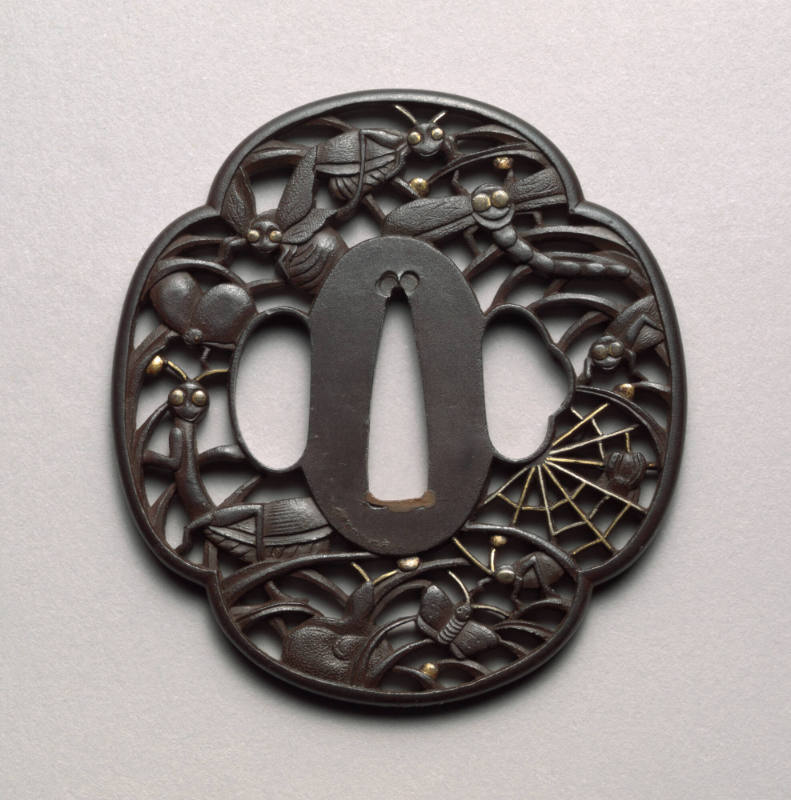

Object Details
Artist
Kuzui, Hamano, Noriyuki, Hamano
Date
early 18th century
Medium
Engraved sentoku with gold and copper inlay
Dimensions
1/2 × 3 3/4 inches (1.3 × 9.5 cm)
Credit Line
Memorial gift from the Estate of Charles W. Hay, Class of 1925
Object
Number
73.005.122
BRIEF DESCRIPTIONThis small item is the handle for a utility knife (kogatana) that is often attached(…)
BRIEF DESCRIPTIONThis small item is the handle for a utility knife (kogatana) that is often attached to the scabbard of a samurai sword.WHERE WAS IT MADE?This object was made in Japan during the Edo period (1615-1868).HOW WAS IT MADE?This handle was handcrafted from a material known as sentoku, a bronze alloy with copper, tin, lead and zinc that, when polished, turns a satiny yellow gold color. Fine designs made of gold and copper have been set, or inlaid, into the sentuko. Other parts of the design were engraved into the surface of the metal.HOW WAS IT USED?The kozuka was a decorative hilt for a small utility blade. During the Edo period, it was one of a number of sword accessories that were the focus of fine craftsmanship and the appreciative sensibilities of collectors. Well-crafted, beautiful accessories reflected the prestige and good tastes of their owners.WHY DOES IT LOOK LIKE THIS?Notice the elderly man sitting by a tree stump. He is likely a sage: a learned, wise philosopher.












